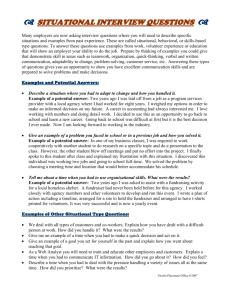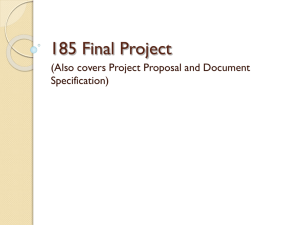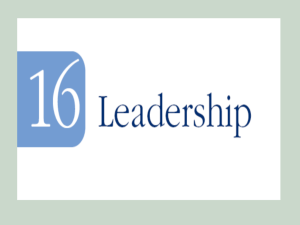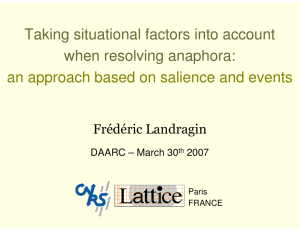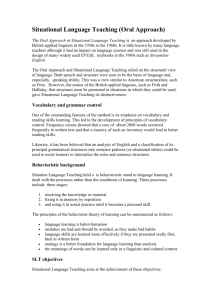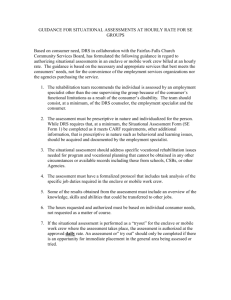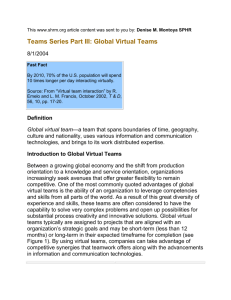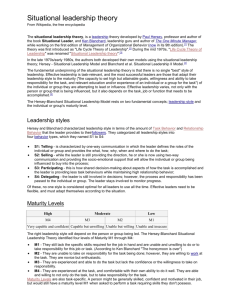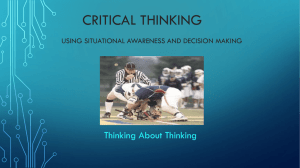Curriculum Process
advertisement
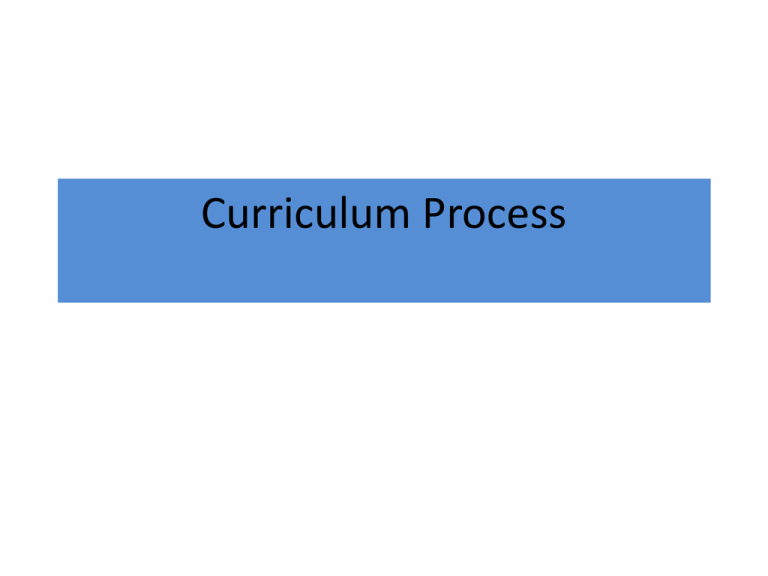
Curriculum Process • the continuous cycle of activities in which all elements of the curriculum are considered and interrelated • Portrays relationships between all elements all through • Regardless of any approach you choose, • Curriculum process requires consideration of all elements • Most approaches have all these four elements; • Objective • Content • Learning experience • Evaluation. However, of recent a new element emerged that requires consideration i.e., Situational Analysis Now, what is situational analysis? When making curriculum decisions • it relies upon curriculum developers to take consideration of the basis of their decision-making. In other words; • what are the sources from which they make their curriculum decisions; • for whom are the decisions being made and; • in what context are they made? To determine these sources, one needs to examine both • The curriculum developers and • The context in which the curriculum is developed • To do this, one need to reflect back on the previous topics or should be able to align oneself with the following questions: • With which conception of curriculum do you align yourself? • Which model of the curriculum process would you apply? • How do you perceive curriculum? In recent years, any curriculum development must • Take the consideration of situational analysis • Situational analysis is the systematic process of analyzing the situation before the curriculum is developed effectively. • However, Hilda Taba (1962) describes situational Analysis as a diagnosis of needs. What is needs assessment? • is the process by which curriculum developers can determine and priorities educational needs. • The information obtained from this process can then be employed in determining, or justifying, a curriculum's aims, goals and objectives. • In this simpler form, we can define situational analysis as the process of examining factors that exist in the environment or society where the curriculum is going to be implemented. • Factors such as; • Internal and external factors • • • • • Internal factors includes Nature of students Nature of teachers School atmosphere Existing school material resources • Perceived problems • External factors includes • Social Changes • Educational system requirements • Subject matter • Teacher support systems • School resource inflow How to undertake situational analysis? • Identify problem/s in context. What problem/s or issues have caused concern? What do they mean in the context of our school? • Select appropriate factors. What factors (see Skilbeck; Soliman) require greater consideration? Do all factors need to be covered? Are there other factors requiring consideration? • Data collection and analysis. What data need to be collected? How will they be obtained? What procedures are used to analyse them? What do the data reveal? What trends if any, are evident? • Procedure/ data collection techniques (Quantitative/qualitative) eg., survey, interview, questionnaire • Interpretation of data (Statistical analysis: based on the use of questionnaires. Where checklists, school records, test results and so forth are used, report results in tabular form and where appropriate use percentages. • Questionnaire data should always be presented as percentages • Data observation • interpretation of data involves analysing and synthesising the data collected. This involves three basic steps. • Presenting all available data • Comprehending that data • Synthesising the data into trends or patterns. • Gather the collected data for analysis; ( eg., questionnaire, observation, checklists, needs assessment, literature, interview) • Familiarize yourself thoroughly on what the different forms of data reveal • Finally, look for trends or pattern, eg., do the questionnaires support the interview, where do inconsistencies occur, is this area of need indicated by teachers etc. • Recommendations. Based upon the trends that are revealed in the data analysis recommendations can be made as a guide for future curriculum development. Importance of situational analysis & needs assessment • is that they provide us with up to date information which can be used to solve the problems, set providers, identify groups which require special need intervention and can create a basis or platform for discussion in as far as curriculum development is concerned, • is that Policy makers (Government officials) and decision makers (curriculum specialists) can make strong arguments in as far as allocation of resources is concerned • A needs assessment can be a powerful tool used to develop strategies to address the curriculum needs, • Eg, needs can be met and unmet needs within the targeted groups e.g. (i) met needs may be availability of teachers and pupils, supplementary readers (ii) unmet may be the distance between the school and the learners home. • is that they will help in the formulation of curriculum intent, content, selection of learning and teaching activities & • It help educationalists meet the needs and expectations of the society Source • Retrieved from http://sitwe.wordpress.com/2010/10/29/theimportance-of-situational-analysis-and-needsassessment-in-the-initial-stages-ofcurriculum-development/ • Curriculum notes, Edith Cowan University, Australia.
